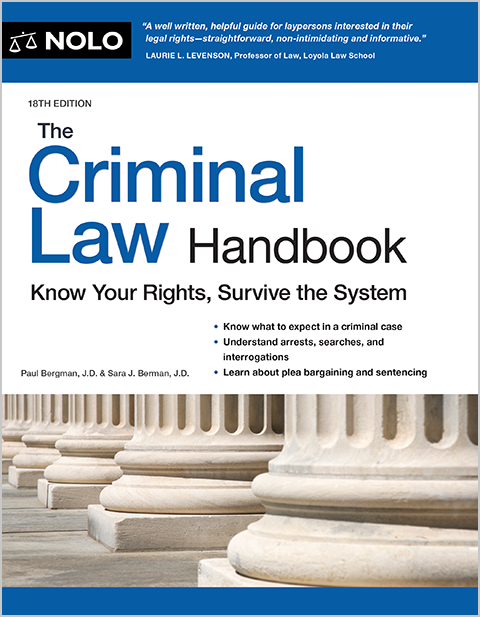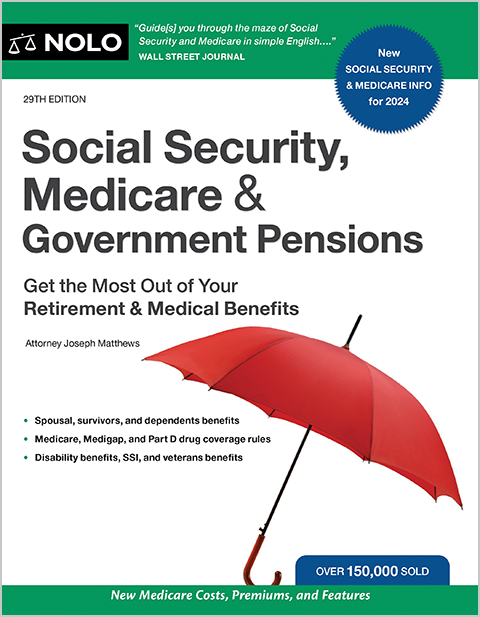If you have a severe heart condition that prevents you from performing full-time work, you may be eligible for Social Security disability benefits.
Heart problems are some of the most common medical conditions that disability claimants identify on applications for disability benefits. Cardiac impairments such as congestive heart failure or major procedures like open heart surgery can cause symptoms that interfere with your daily activities on a prolonged basis.
If you have limitations from a heart problem that prevent you from working full-time for at least one year, you may be eligible for Social Security disability benefits. But qualifying for disability isn't as simple as having a diagnosis of a heart disease or disorder. You'll need to know what medical evidence to provide that supports certain limitations the Social Security Administration (SSA) considers disabling.
- How Hard Is It to Get Disability for Heart Problems?
- What Heart Problems Qualify for Disability Automatically?
- What If My Heart Condition Doesn't Meet a Listing?
- Evidence Required to Prove Disability Due to a Heart Condition
- Disability Benefit Check Amounts for Heart Conditions
- Getting a Lawyer's Help to Appeal a Denial
How Hard Is It to Get Disability for Heart Problems?
According to the agency's Annual Statistical Report, about 11% of claimants who were awarded Social Security Disability Insurance (SSDI) benefits in 2023 had a diagnosed impairment of the circulatory system—which includes disorders of the heart and blood vessels—making heart problems the second most commonly awarded type of disabling condition for SSDI.
Statistics only tell part of the tale, however. Whether or not your disability application is approved depends on factors such as the strength of your medical records, what your doctors have said about your condition, and if your heart problem is on the SSA's list of impairments that automatically qualify you for benefits.
What Heart Problems Qualify for Disability Automatically?
The heart is the most important muscle in your body, so when something goes wrong with it, doctors take it seriously. With proper treatment, you may experience only mild symptoms of fatigue or weakness, allowing you to continue on pretty much as normal. However, some heart problems are severe enough to be potentially life-threatening, even with treatment. The SSA recognizes these conditions as "listed impairments." If your medical records contain evidence of greatly reduced heart function, you'll "meet a listing" and qualify for disability benefits.
Section 4.00 of the Blue Book (another name for the Listing of Impairments, in reference to the historical color of the manual) covers disorders of the cardiovascular system. Below you can learn about some specific heart problems that may qualify you for disability benefits under a listing.
Congestive Heart Failure
Congestive heart failure occurs when the heart is unable to pump sufficient quantities of blood to the body's organs, causing an accumulation of blood returning to the heart in the organ's tissues. Symptoms of congestive heart failure often include shortness of breath, weakness, dizziness, and fatigue. Edema (swelling) is also common, as the kidneys may be unable to rid the body of excess sodium and water. Congestive heart failure can be caused by dilated, hypertrophic, or restrictive cardiomyopathy.
The SSA evaluates congestive heart failure under listing 4.02, Chronic heart failure. You'll meet the listing if your heart is unable to contract ("systolic failure") or expand ("diastolic failure") normally and you've either been consistently unable to perform activities of daily living, have had three or more episodes of acute congestive heart failure over 12 months, or are unable to successfully perform an exercise tolerance test within certain limits.
Open Heart Surgery
Having open heart surgery doesn't, by itself, qualify as a disabling impairment. But if you've undergone a heart transplant, you'll be considered disabled for one year following the surgery under listing 4.09. After one year, the SSA will reevaluate your health to see if you meet another listing or are otherwise unable to work full-time.
Coronary Artery Disease
Coronary artery disease—also referred to as ischemic heart disease—typically causes angina (chest pain) and shortness of breath, especially on exertion. The SSA evaluates disability claims due to coronary artery disease under listing 4.04, Ischemic heart disease. You can meet this listing if your records contain evidence of the following:
- an abnormal exercise tolerance test
- three separate ischemic episodes (loss of blood flow) requiring angioplasty or bypass surgery over a 12-month period, or
- objective medical imaging showing 50 to 70% narrowing of a non-bypassed coronary artery causing symptoms that result in serious limitations in activities of daily living.
Social Security may consider several specific diagnoses under the listing for coronary artery disease. For example, atherosclerosis occurs when fat and calcium deposits build up in the arteries, causing decreased blood flow to the heart. Arteriosclerosis, a related condition, happens when those plaque deposits cause the arterial walls to harden. Heart attacks ("myocardial infarctions") are typically caused by a combination of both conditions.
Aorta or Major Branch Aneurysm
Weakness or damage to a blood vessel can cause the vessel wall to bulge at its weakest point. This is known as an aneurysm. Aneurysms can occur almost anywhere in the body, but are often found in the wall of the aorta, the large artery responsible for delivering oxygenated blood from the left ventricle of the heart to the branch arteries. When an aneurysm ruptures—whether in the aorta, the brain, or elsewhere—the outcome can be potentially fatal.
You'll meet listing 4.10 if you have medical imaging confirming the existence of a "dissected" aneurysm—meaning that the inner lining of the affected artery starts to separate from the arterial wall—that can't be controlled by prescribed treatment.
Recurrent Heart Arrhythmias
An arrhythmia, or abnormal heartbeat, results from a disruption to the heart's internal electrical system. Whether the heart beats too fast (tachycardia), too slowly (bradycardia), or erratically (fibrillation), arrhythmias can cause fluttering in the chest, fainting, dizziness, or shortness of breath. Severe arrhythmias can cause insufficient blood flow to the brain and other vital organs, potentially leading to cardiac arrest.
While it's rare to qualify for disability based solely on heart arrhythmias—many arrhythmias are harmless or cause only mild symptoms—claimants who have severe, recurrent arrhythmias (despite treatment) may meet the requirements of listing 4.05. To get disability under this listing, you'll need to show that you've experienced a loss of consciousness (syncope) or altered consciousness (near syncope) on three separate occasions over 12 months, backed up by medical testing—such as an EKG—showing that the syncope is caused by the arrhythmia.
What If My Heart Condition Doesn't Meet a Listing?
Meeting a listing is complicated, and it's hard to qualify for disability that way. But even if Social Security doesn't find that you meet (or equal) the requirements of a listed impairment, you may still be found disabled based on your residual functional capacity, or RFC.
Your RFC is one or two paragraphs that describe what you can and can't do at work, despite your heart problem. Social Security reviews your medical records and doctors' restrictions to arrive at an RFC that reflects your exertional level—meaning the amount of weight you can lift and the length of time you can be on your feet in a workday. Most RFCs for physical conditions contain restrictions to medium, light, or sedentary (sit-down) work. If the limitations in your RFC prevent you from doing any full-time work, you'll receive a "medical-vocational allowance."
Note that if you don't have many limitations anymore because you've had successful heart surgery or your medications are working well, it's unlikely that you'll get an RFC for anything more restrictive than medium work. But if you're at least 50 years old and you can't do your past jobs, you may get disability benefits with a sedentary or light RFC using a special set of rules known informally as "the grid." For claimants younger than 50, you'll need to show that you can't do even the least physically demanding jobs before Social Security can find you disabled.
Evidence Required to Prove Disability Due to a Heart Condition
Your medical records are the key to a successful disability claim. Without medical evidence, Social Security doesn't know whether you might meet a listing or what restrictions to include in your RFC. Ideally, your medical records should include most, if not all, of the following:
- objective imaging, such as an X-ray, MRI, CT scan, angiography, or ultrasound
- clinical notes from your regular doctor, preferably a cardiologist
- treatment plans, such as prescription medications, and any side effects
- hospital admission and discharge records
- documentation of inpatient and outpatient surgical procedures, like catheterization
- physical examinations, such as a stress test on a treadmill, and
- electrocardiograms (EKGs or ECGs).
Make sure that you submit all your relevant medical records, including diagnostic testing, from your primary care physician and your cardiologist, to prove the extent of your physical limitations. The level of exertion that causes you to experience symptoms like fatigue, shortness of breath, or angina is important to your RFC analysis, so you should ask your treating doctors to provide opinions as to your work-related limitations—especially regarding your ability to stand, walk, sit, lift, carry, bend, stoop, squat, and climb.
Disability Benefit Check Amounts for Heart Conditions
Social Security doesn't pay benefits based on the type of medical impairment that's causing your disability. Instead, the amount of your disability check depends on whether you're eligible for SSDI or Supplemental Security Income (SSI). SSDI payments are awarded to claimants based on their employment history and earnings record, while SSI payments are awarded to disabled people with limited income and resources.
SSDI can pay up to $4,018 per month in 2025, although the average amount is much lower, at around $1,600. The maximum you can receive in SSI for 2025 is $967 per month, but that amount can decrease based on how much earnings, if any, you have in that month—or increase if you live in a state with an SSI supplement. For more information to help you calculate the amount of your disability check, see our articles on how much you can get in SSDI benefits and how much you can receive in SSI.
Getting a Lawyer's Help to Appeal a Denial
Unless you have a very strong medical record that clearly demonstrates significant functional limitations, you probably won't be awarded disability benefits for your heart problem on your first try—but you can appeal your initial denial. You aren't required to get an attorney at any stage of the process, but an experienced disability lawyer can help you stay on top of appeal deadlines, work with your doctors to get favorable opinions into your case file, and make compelling arguments about your limitations in front of a Social Security judge.
- How Hard Is It to Get Disability for Heart Problems?
- What Heart Problems Qualify for Disability Automatically?
- What If My Heart Condition Doesn’t Meet a Listing?
- Evidence Required to Prove Disability Due to a Heart Condition
- Disability Benefit Check Amounts for Heart Conditions
- Getting a Lawyer’s Help to Appeal a Denial

